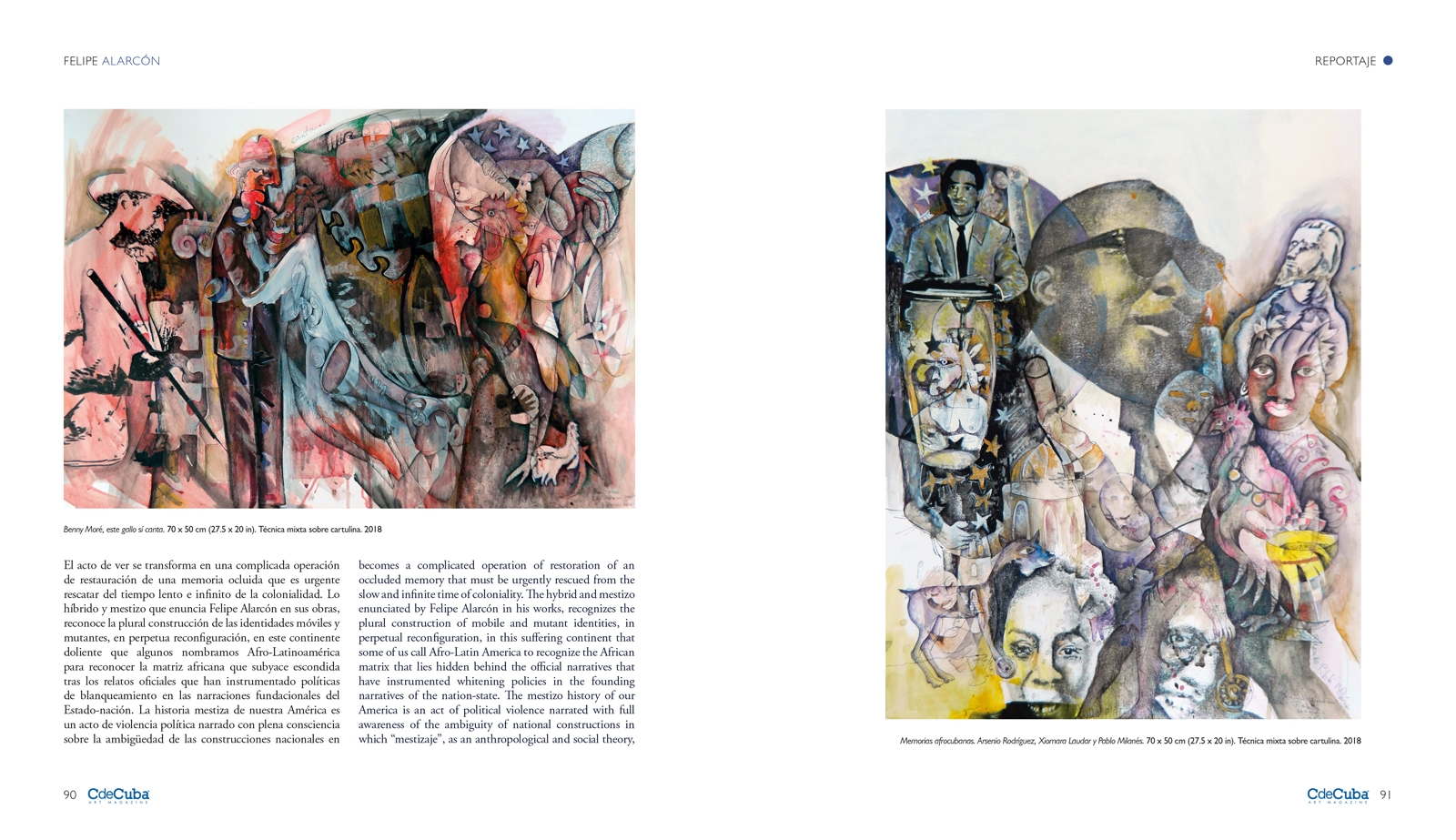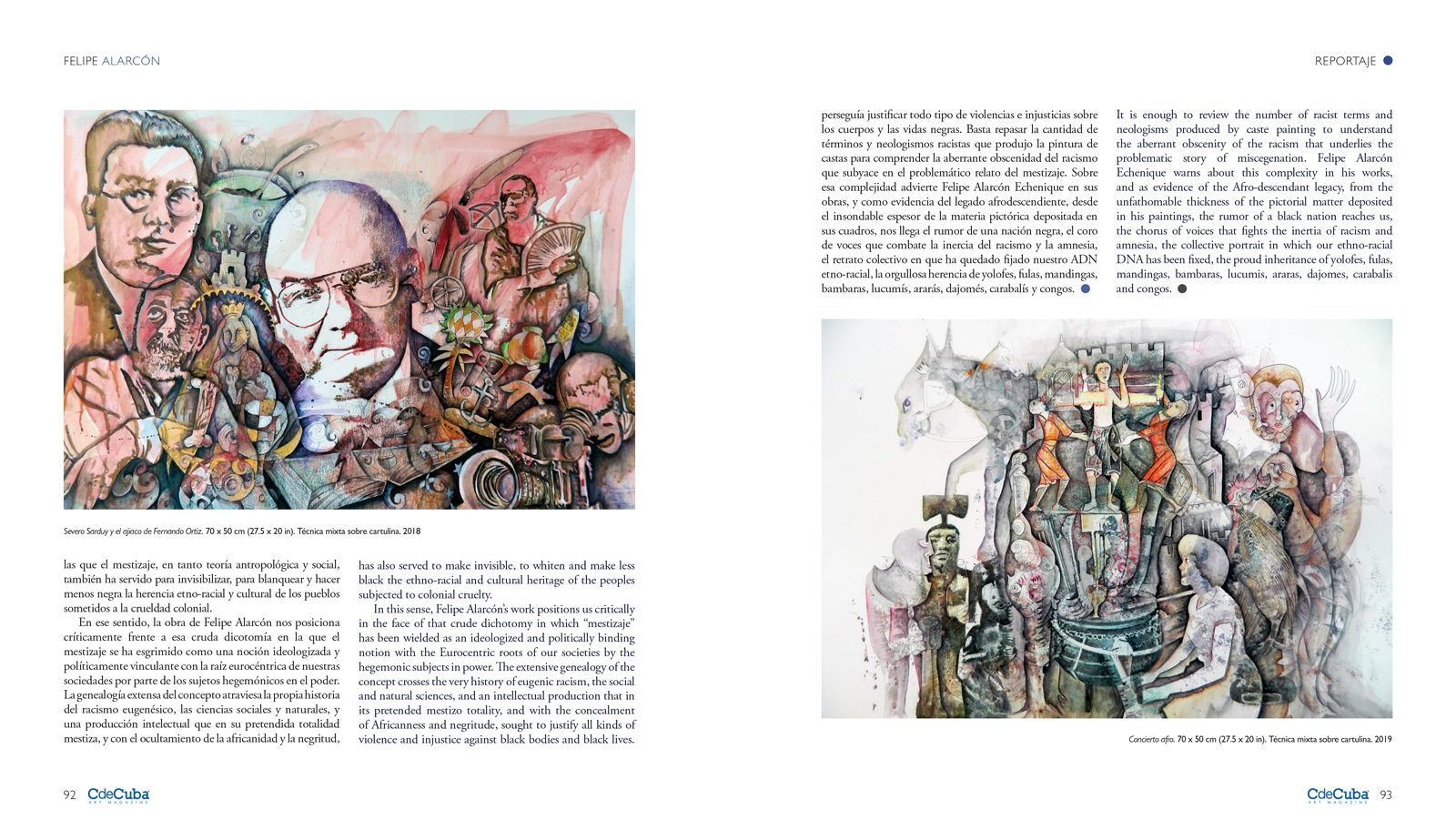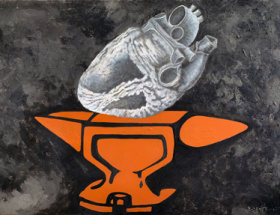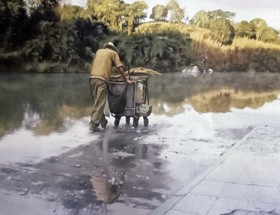Reconstructing the Collective Portrait of a Black Nation
By Suset Sánchez Sánchez
A significant path in Felipe Alarcón Echenique’s work has been to unveil the Afro-descendant faces that have forged national history and culture. “Unveiling” is a more than appropriate term in the context of this artist’s poetics, because it is articulated at the intersection of gesture around meaning; but it also alludes to the technical procedure that operates behind the pictorial gesture. And it is precisely Felipe who brings to light, “unveils”, reveals through the transparencies and veils of his paintings those images of historical figures, intellectuals and artists of African descent whose subjectivity and work have contributed to the transcendence of the socio-cultural complex of the Cuban nation. Unfortunately, many of these names have remained invisible for centuries, as a result of the persistent and normalized exercise of racism in a post-colonial context where black bodies and black lives have had to resist and struggle against silence and exclusion.
Recent exhibitions by the artist, such as Foto de familia (2016-2017), Mestizos, de Aponte a Belkis Ayón (2018) and Diálogos de mestizaje (2019), emphasize the search for that collective portrait of blackness that draws its transcultural essence in the island’s geography. However, in Felipe Alarcón’s canvases, that song of griot that narrates the displacement of the African diaspora, travels with the lullaby of the waves the distances that the sea has sown between the islands of the Caribbean, to search from land to land for the heritage of Africa. Therefore, it is not surprising that among the characters that “appear” –again we note the semantic duality of the word to designate the poetic meaning and the technical operation of painting– in the figurative palimpsest of the works, making their way through layers of pigments and brushstrokes of watercolors and gouache, Jean Michel Basquiat appears together with other artists that surely make up the revered pantheon of references and the personal imaginary of Alarcón Echenique.
In this painting whose images are woven like a tangle or Lam’s jungle, the materials struggle to gain the elusive territory on the surface of the painting. The artist is an avid builder with mixed techniques that complexify the dimension of the gaze that tries to penetrate the depth of the work, that wants to distinguish the stroke of the charcoal where the pigment did not cover the cardboard. The act of seeing becomes a complicated operation of restoration of an occluded memory that must be urgently rescued from the slow and infinite time of coloniality. The hybrid and mestizo enunciated by Felipe Alarcón in his works, recognizes the plural construction of mobile and mutant identities, in perpetual reconfiguration, in this suffering continent that some of us call Afro-Latin America to recognize the African matrix that lies hidden behind the official narratives that have instrumented whitening policies in the founding narratives of the nation-state. The mestizo history of our America is an act of political violence narrated with full awareness of the ambiguity of national constructions in which “mestizaje”, as an anthropological and social theory, has also served to make invisible, to whiten and make less black the ethno-racial and cultural heritage of the peoples subjected to colonial cruelty.
In this sense, Felipe Alarcón’s work positions us critically in the face of that crude dichotomy in which “mestizaje” has been wielded as an ideologized and politically binding notion with the Eurocentric roots of our societies by the hegemonic subjects in power. The extensive genealogy of the concept crosses the very history of eugenic racism, the social and natural sciences, and an intellectual production that in its pretended mestizo totality, and with the concealment of Africanness and negritude, sought to justify all kinds of violence and injustice against black bodies and black lives. It is enough to review the number of racist terms and neologisms produced by caste painting to understand the aberrant obscenity of the racism that underlies the problematic story of miscegenation. Felipe Alarcón Echenique warns about this complexity in his works, and as evidence of the Afro-descendant legacy, from the unfathomable thickness of the pictorial matter deposited in his paintings, the rumor of a black nation reaches us, the chorus of voices that fights the inertia of racism and amnesia, the collective portrait in which our ethno-racial DNA has been fixed, the proud inheritance of yolofes, fulas, mandingas, bambaras, lucumis, araras, dajomes, carabalis and congos.






